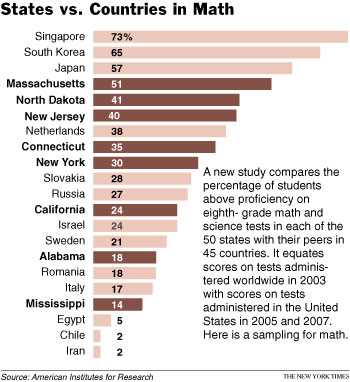European and American Education Systems: Similarities and Differences
This research looks at some similarities and differences between the European and American education systems.
The aim of education
In the US, education acts a tool for the public good. Therefore, both federal and state involvement in terms of funding is paramount. On the other hand, European higher education policy aims to promote social, political, and economic issues. At the same time, the education system addresses various industrial and market challenges. The governments provide minimal funding for students pursuing higher education.
A focus on the UK education system shows that the country offers practical elements of education. On the other hand, the US promotes liberal arts education. The US education system introduces students to broad aspects of the curriculum. Conversely, the UK education system is ideal for learners who have chosen their career paths. This approach enables learners to concentrate on their areas of specialisation throughout their study period. Learners can also conduct research in areas of their interests. However, the UK education system favours lectures, seminars, and tutorials. As such, learning is not interactive. However, learners must be proactive on their own. Choices of degrees are also diverse based on individuals’ interest.
Test Scores
The US education system has retained its superior quality for decades. In 1989, White and Ahrens compared two aspects of education systems (mass education and general education) between the US and Europe. They established that the US education system was superior to European education system (White and Ahrens 55). The US has maintained that standard to-date against Europe.
However, the major concern has been the deteriorating quality of education in the US. According to a study conducted by American Institutes of Research, students in other countries tend to do better in sciences and mathematics than students in the US (Dillon 1). The study presented mixed results across various European nations. Experts asserted that test results faced various challenges. As a result, such results did not provide an adequate basis for comparison of states or countries. This is because of different variations, such as different ages of learners in different grades. Therefore, such variations do not allow tests to act as tools for generalisation and effective conclusions across various states or nations.
On-time delivery!
Get your 100% customized paperdone in as little as 1 hour
Results from these studies show great disparities in the US education system. According to Kirsch and fellow researchers, the performance gap in the US between highest and low achiever is among the highest in Organisation for Economic Co-operation and Development (OECD) countries (Kirsch et al. 3).

Figure 1: States vs. Other countries (scores in Math) (Source: American Institutes for Research, 2007)
Best Institutions
Based on the World University Rankings report of 2010/2011, the US has the most and world’s best institutions of higher learning. These institutions have produced the best professionals in various fields. It is also important to note that the best researchers work in these institutions. Educators in the US universities are able to provide quality education to students than in other universities across Europe. The ranking shows that the best universities are in the US and Europe (the UK).
Table 1: World University Rankings 2010-2011
| Rank | Institution | Country / Region | Overall score |
| 1 | Harvard University | United States | 96.1 |
| 2 | California Institute of Technology | United States | 96.0 |
| 3 | Massachusetts Institute of Technology | United States | 95.6 |
| 4 | Stanford University | United States | 94.3 |
| 5 | Princeton University | United States | 94.2 |
| 6 | University of Oxford | United Kingdom | 91.2 |
| 7 | University of Cambridge | United Kingdom | 91.2 |
Cost
Education in Europe is cost-effective compared to costs of education in the US. However, the low-cost of education has led t